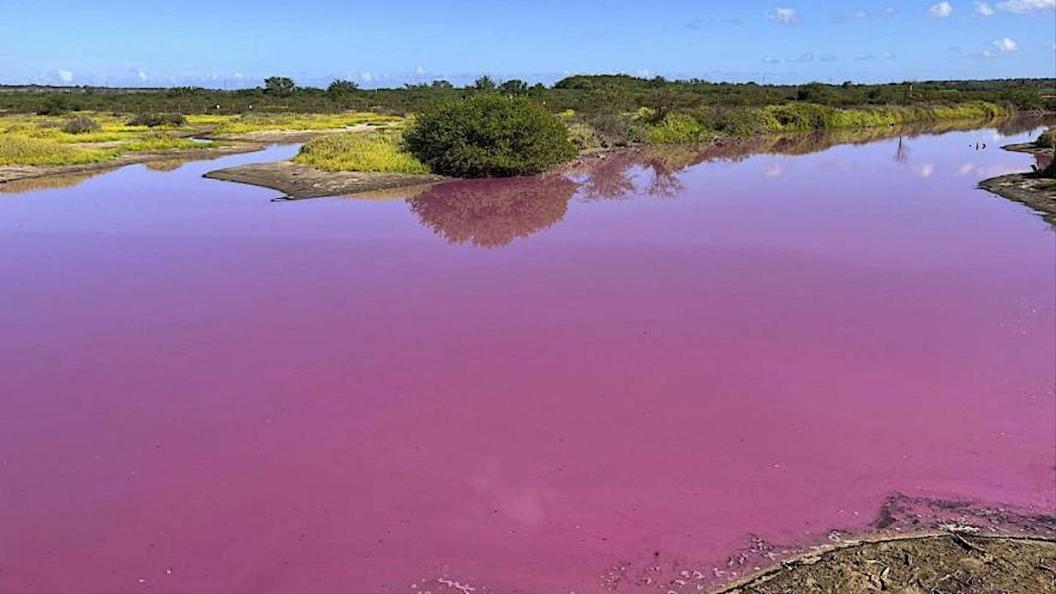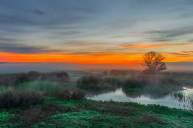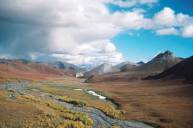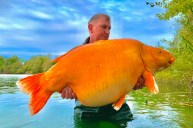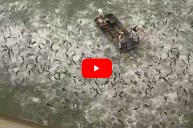Valentine's Day is several months away, but Keālia Pond in Hawaii appears to be celebrating the holiday extra-early. That's not necessarily a good thing: The pond water has turned an unexpected brilliant pink.
Staff at the Keālia Pond National Wildlife Refuge on Maui have been watching the pond closely since the end of October when a visitor to the refuge brought their attention to the first hints of discoloration. "I just got a report from somebody that was walking on the beach, and they called me up, like, 'There's something weird going on over here,'" refuge manager, Bret Wolfe, told AP News.
Something weird, indeed. The entire pond had turned bubble-gum pink, prompting some visitors to refer to it as the "Barbie pond."
The pink hue was originally thought to be from an algae bloom, which occurs when normally occurring algae grows out of control. However, lab testing at the University of Hawaii negated that hypothesis. According to the U.S. Fish and Wildlife Service, the strange color appears to be caused by an organism called halobacterium.
Halobacterium is a single-celled organism that thrives in bodies of water with high levels of salt. Testing has shown that salinity levels in the Keālia Pond outlet area are currently greater than 70 parts per thousand, which is twice the salinity of the ocean.
According to the U.S. Drought Monitor, the entire island of Maui is in severe drought. Keālia Pond National Wildlife Refuge itself is located in a region experiencing "extreme drought," as is the Waikapu Stream, which brings water from the mountains into Keālia Pond. With the stream drier than usual, less fresh water flows into the pond. This causes the salt concentration to skyrocket, which in turn makes the pond the perfect environment for halobacteria to flourish.
The U.S. Fish and Wildlife Service is doing more testing to determine the exact strain of halobacterium. Though no halobacterium is known to be toxic, authorities at the wildlife refuge recommend that visitors stay out of the water, not eat any fish taken from the water, and keep pets from drinking the water.
READ MORE: Man Kayaks 2,400 Miles From California to Hawaii in 91 Days
